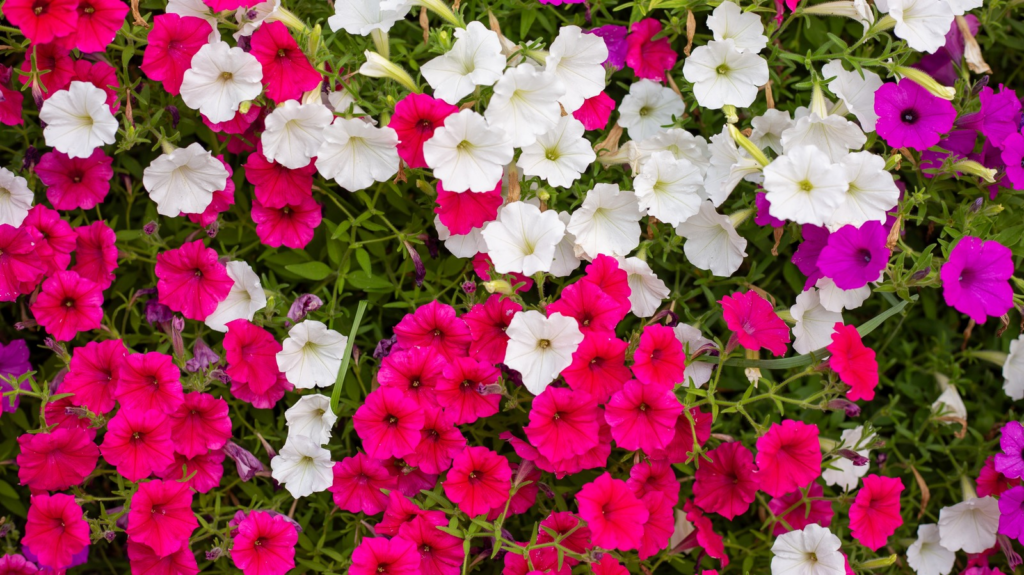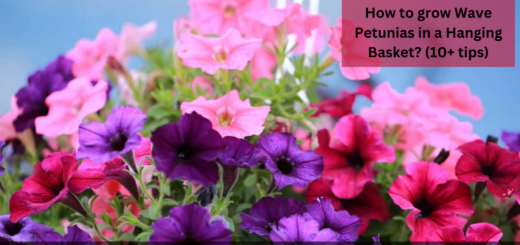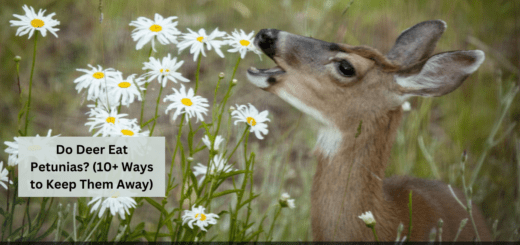What is a Petunia? – How do you grow & care for Petunia flowers?
Do you know about petunias? Where do to grow? Have you ever thought of growing them in your yard? Do you know what is the best thing about them?
Put a full stop; all your questions are going to end now. Here, I have shared all my research that I discovered after planting them in my garden. In this guide, you will learn how to grow them and incorporate them into your flower beds and garden.
Quick takeaways:
- Petunia flowers are fast-growing plants and even very famous gardening flowers for containers and borders as well.
- People use petunias as annuals in a few regions.
| Common Name | Petunia |
| Botanical Name | Petunia spp. |
| Family | Solanaceae |
| Plant Type | Annual, perennial |
| Mature Size | 6–24 in. tall, 6-36 in. wide |
| Sun Exposure | Full |
| Soil Type | Well-drained, moist |
| Soil pH | Acidic |
| Bloom Time | Spring, summer, fall |
| Flower Color | Pink, purple, yellow, red, orange, green, white |
| Hardiness Zones | 10–11 (USDA) |
| Native Area | South America |
What is a Petunia?
In most locations, petunias are handled as annuals, but in Zones 9 to 11, they can be grown as sensitive perennials. The flowers are available in a range of colors, and they bloom from spring until frost.
These vibrant annuals are frequently used in borders, containers, and hanging baskets such as Calendula, Dahlia, Lantana, Vervain, Snapdragon, etc, and even as a temporary groundcover. Some even have a faint scent.
Petunias are a popular choice for both borders and containers in the yard. They have broad, trumpet-shaped flowers and spreading foliage that is hairy and somewhat sticky, and they bloom profusely in almost every hue except pure blue. There is a lot of variety in the petunia genus, and most of them are marketed.
Four species of petunias are as below:
- Grandiflora petunias
- Milliflora petunias
- Multiflora petunias
- Spreading petunias
When should you plant Petunia?
Do you people know when you should plant pretty petunias in your garden? So, let me tell you when you should add the elegance of these plants to your garden in detail:
- You have to choose the plants that are short and even compact and try to take the ones that aren’t blooming and they will start settling in soon.
- You can buy it from any nursery that sells young plants.
- Are you thinking of growing them through the seed? If yes, then begin the seeds inside approximately 10-10.5 weeks before your last spring date.
- You need to plant these pretty petunias outside after that last spring date, but make sure to have a look at the weather so that you can protect them.
How to propagate Petunia?
Let us know the method of propagating petunias in detail:
Step 1- Firstly, you need to shake out all the tiny seeds at the top of the moist seed mix.
Step 2- Now, slightly, let them press down and do not hide them because they need sunlight for growing and developing.
Step 3- Gently, shelter the jar or container with some plastic and take it to a warm area to keep plants warm in winter.
Step 4- You will be able to see the seedlings before 10 days and show their voice out, remove that plastic.
Step 5- You can transplant them in your designer pots or jars when the seedlings are shown with the leaves at least three.
They can be transplanted only if leaves are coming out otherwise you can’t display them. This is how you are done propagating your pretty petunias with the help of this guide.
When to Plant Petunias?
If you know when to plant petunias, then it’s great; if not, you have to follow the tips below to know when to plant them. they are as follows:
- One of the easy ways to plant the petunias is to first buy the petunias from the market.
- Keep in mind to choose the short and compact young plants for your area.
- If you are thinking of growing them from seeds, then you have to start doing so indoors about 8 to 10 weeks before frost.
- Last but not least, you can plant the petunias outdoors after the frost has been over.
- Be cautious about seeing the weather there so that the plant remains protected.
How to take care of Petunia?
So folks, as you have from the beautiful petunias in your yard, the next necessity is to take care of them and nourish them. Follow the below points for taking care of the beautiful petunias:
Watering
- You have to water them regularly as their empty root systems withered shortly. It is sufficient to soak the plants with 1 to 2 inches of water every week.
- Ensure the soil is well-drained, especially in hot weather, they need water daily.
Fertilizer
- Try to feed your petunias with a properly balanced fertilizer, you can even put some compost into the soil.
- Some of these varieties require fertilization weekly, so you have to be regular about this.
For more such plant-related articles, you may also read, What is Potentilla? – What is the best place to grow Potentilla?
Light:
- Almost every variety of petunia requires full sun which means that at least 6 hours or even more than that sunlight for growing and maintenance.
- Unless there is summertime, they can keep themselves refreshed and bloomed with the partial shade too.
Soil:
- They ought to take light and fertile soil that gives good drainage. A lot of soil types can be taken by them as long as they are keeping themselves drained.
Temperature and humidity level:
- What about humidity and climatic conditions? 60 to 75 degrees Fahrenheit are sufficient temperatures for the petunias during the day and 55 to 65 degrees at night.
- Temperature can be tolerated by them only below 40 degrees Fahrenheit, not more than that. These flowers tend to be in a moderate humidity level for their growth and development.
Potting and Repotting Petunias
Potting is done when the plant is overgrown and its foliage comes out from the drainage holes that is the best type to report a plant. At the time of repotting, you have to make use of an all-purpose potting mix for your plant. in a single container do not plant more than three plants.
Keep the gap between 12 inches wide and deep. Also, pets will grow well if you provide them with a container that has a good amount of drainage holes so that the excess water from the soil gets drained. The material of the pot depends on what you are buying as per your desire. To avoid root rot in the plant, you have to gently repot your plant.
Common Problems With Petunias
Just like other plants, petunias will also require to be prevented from various common problems.
Yes, this problem is easy to grow plants but They will have various problems that you have to control so below are the problems and interventions to look after. they are as follows:
Wilted Flowers or Leaves
One of the problems faced by the petunia is the wilted flowers or leaves in the plant. One of the main reasons is either the excess supply of water or a low supply of water.
So for that, you have to keep checking your soil and if the soil is dry then only water the plant otherwise the plant will remain without water for a long. if the plant is moist, then you do not have to water the plant.
Leggy Stems
Leggy stems Are one of the common problems every plant faces. Though you can deadhead the plant’s flowers and leaves it will not help the plant fully so you have to grow.
The stems are about 2 to 3 inches long because when it will regrow, they will not be as as leggy they were before.
How to Get Petunias to Bloom?
Here comes the amazing part of this guide. Every Gardner grows plants and vegetables in the home garden so that they receive beneficial results from it. The same is the case with flowers when you grow petunias in your home garden you expect them to flower at their best. Isn’t it?
The very first pet, blooms at the time of summer, though they can even begin in the spring till if the temperature suits them, they will bloom until the frost comes.
Some of the Petunias that are older, will be required to be pruned to encourage new growth of blooms in the plant. Then they will bloom best all along in the summertime, whereas, on the other hand, some of the new varieties of the petunia will not require pruning.
They will maximize their blooms always. You can remove the leggy growth in the plant which will develop healthy growth in the plant. So to encourage the petunia to bloom, You have to see the variety growing in your garden and do your best for it.

Wrapping up the context
Last, but not least, it is suggested that you all grow these pretty petunias in your garden to make your yard beautiful. I hope the article will be helpful for you all. Read it thoroughly, you’re gonna love the beauty of petunias.
Thanks for reading! Happy Gardening!


